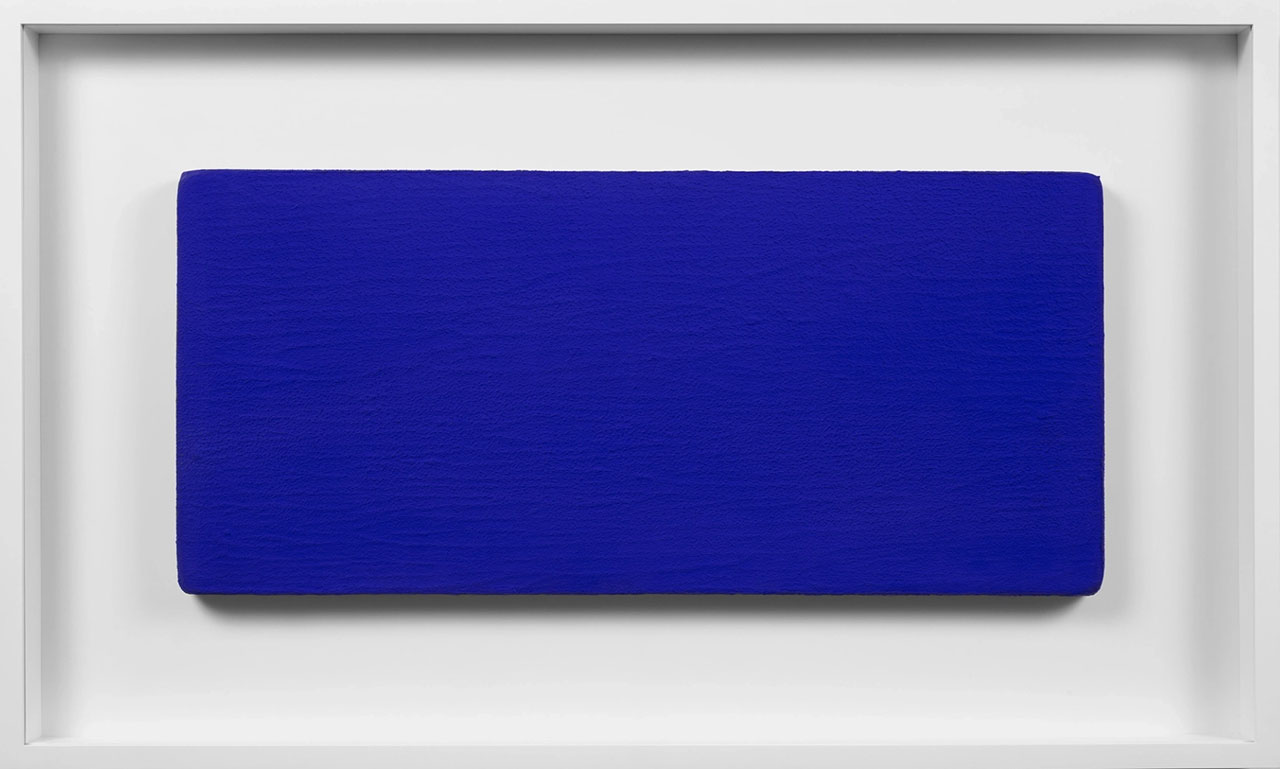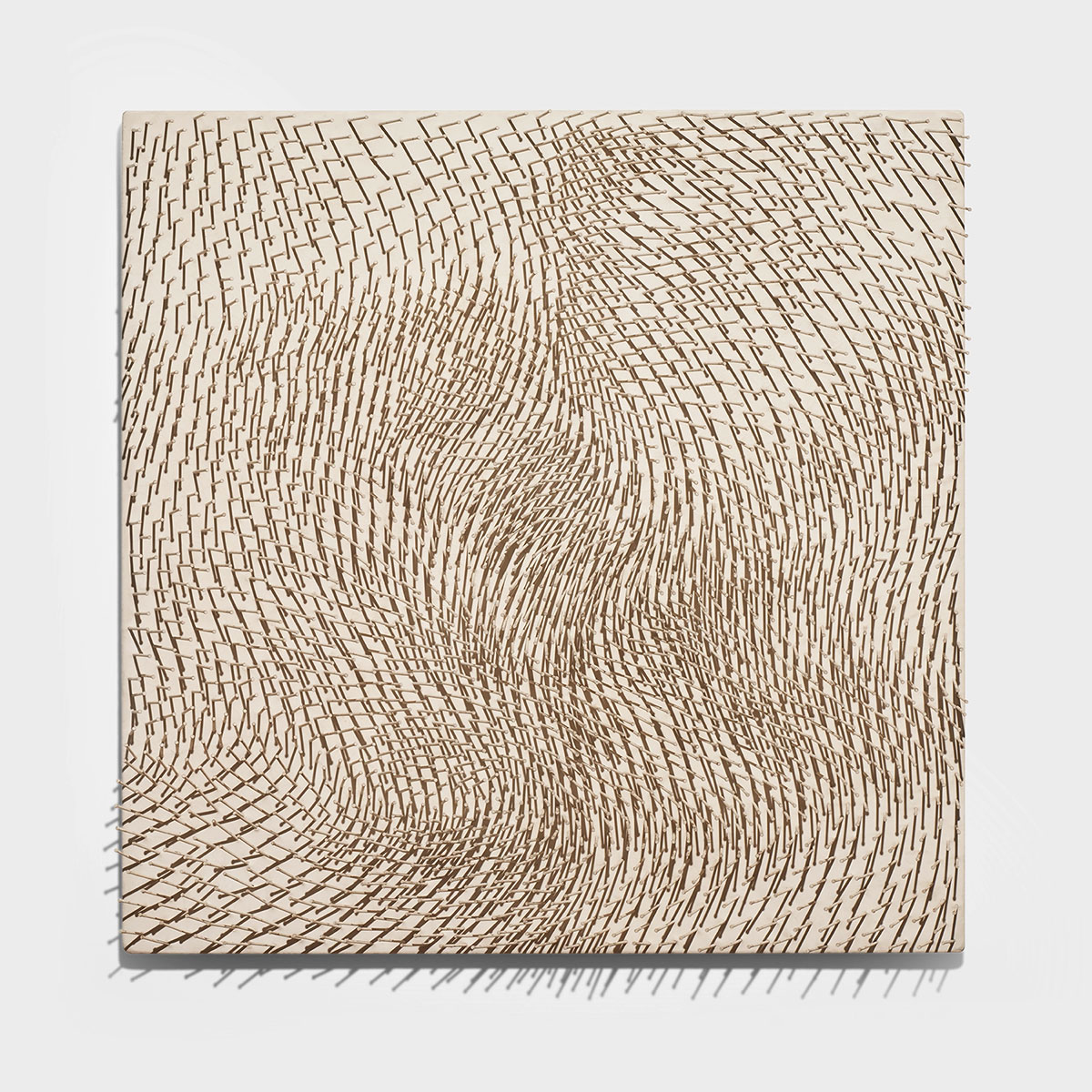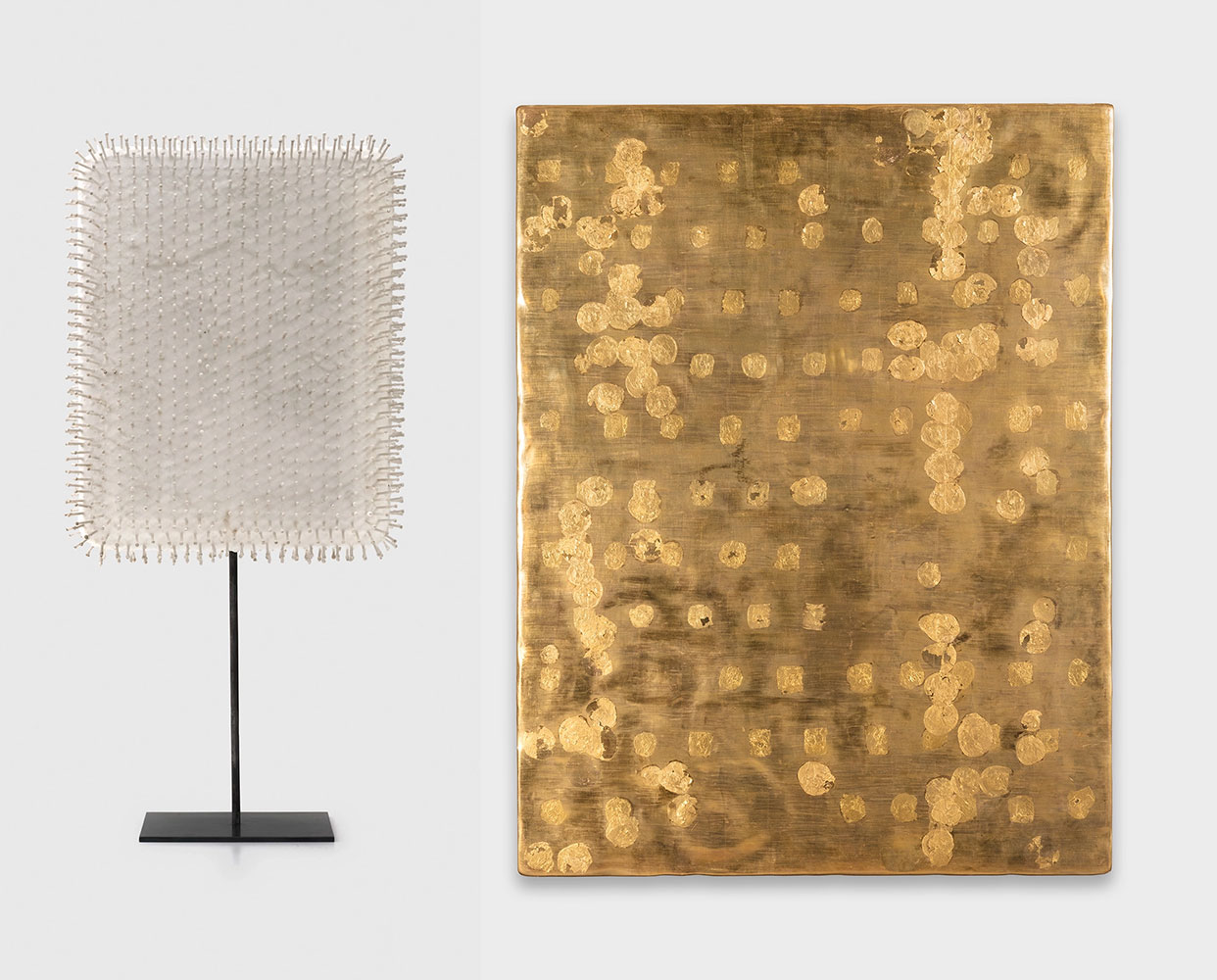ART CITIES: London-Material States, Yves Klein and Günther Uecker
 The exhibition “Material States: Yves Klein and Günther Uecker” explores the connections between Yves Klein and Günther Uecker, two members of the Europian postwar avant-garde, that developed radically alternative visual languages at a time when artistic traditions were increasingly questioned and dismantled. The artists’ lives converged in manifold ways, and, in January 1962, Klein married Uecker’s sister Rotraut*, rendering the two family.
The exhibition “Material States: Yves Klein and Günther Uecker” explores the connections between Yves Klein and Günther Uecker, two members of the Europian postwar avant-garde, that developed radically alternative visual languages at a time when artistic traditions were increasingly questioned and dismantled. The artists’ lives converged in manifold ways, and, in January 1962, Klein married Uecker’s sister Rotraut*, rendering the two family.
By Efi Michalarou
Photo: Lévy Gorvy Dayan Gallery Archive
The exhibition “Material States: Yves Klein and Günther Uecker” includes major works by each artist, including Uecker’s poignant “Hommage à Yves Klein II”, created the same year as Klein’s untimely death at the age of 34. Both Klein and Uecker experienced the devastation of the Second World War at a young age. As emerging artists, they rallied against traditions they saw as lifeless and authoritarian, turning to unorthodox methods and media. Combining belief in scientific progress with deeply felt spiritual ideas and poetic transformations of unconventional materials, their practices sought to instigate transformative moments of pure perception. The exhibition includes significant works from critical periods in their oeuvres, including Uecker’s “Das gelbe Bild” (1957–58) and Klein’s gold-leaf panel “Le silence est d’or” (1960). Early on in his career, Mecklenburg-born artist Günther Uecker turned against the predominant art movements of the 1950s: socialist realism in the GDR and informalism in the West. This early work was dominated by haptically structured, monochrome color fields, until he subsequently discovered the nail as a pictorial element, influenced by Eastern philosophies and Gregorian chanting, Uecker began a ritual of hammering nails onto canvas, panels, and objects, to achieve complex patterns of light and shadow without recourse to traditional methods associated with the history of painting. In the exhibition, alongside the sculpture “Weisse Strukturzone” from 1959, the painting “Das gelbe Bild” (1957–58) captures the experimentation that would result in the biomorphically shifting pictorial fields of works like “Bewegtes Feld II” (1963). Klein’s paintings affirm his conviction that art should exude life. His “Anthropométries” and “Peintures de feu” exemplify this ethos, possessing traces of living flesh and imprinted memories of fire, water, earth, and air. Klein once wrote, “The link between spirit and matter is energy. The combined mechanism of these three elements generates our tangible world, which is claimed to be real but is in fact ephemeral.” Through direct physical contact and alchemy, energy is captured and transferred in the works on view, binding the soul and the material support. In the late 1950s, Klein first exhibited his monochromes in 1955, and worked with pigment and synthetic resin to create surfaces that disbanded conventional ideas of painting and embodied concepts of the infinite and the immaterial. Inspired by sources from Zen Buddhism to the writing of Eugène Delacroix, Klein invested color with metaphysical symbolism, arriving at the three hues that would dominate his oeuvre from the late 1950s: blue, gold, and rose. “Le silence est d’or” demonstrates Klein’s expert navigation between a principal material state and transcendent experience, alongside the ikb saturated fields of “Monochrome bleu sans titre” (1959) and “Relief Planétaire “Région de Grenoble” (1961/90). In the early ’60s, Uecker joined Heinz Mack and Otto Piene in the movement Group Zero—a self-proclaimed “ground zero” for artists wanting to reformulate the conditions for art in a rapidly modernizing society—with which Klein was also increasingly associated. Works from this period include “Hommage à Yves Klein II” and “Peinture de feu sans titre” (1961), which reveal how the artists positioned physical, performative processes at the core of their practices. For Uecker, the activity of hammering nails across a surface acts as a conduit to express emotions that span anger, trauma, hope, and release. Klein’s alchemical fire paintings—synonymous with their act of creation—unravel the fragile boundaries between genesis and destruction, life and death.
*Rotraut Klein-Moquay, was born in Rerik, Germany. As a teenager, she moved to Düsseldorf to live with her older brother, Gunther Uecker. In Düsseldorf, she worked odd-jobs and began to experiment with art. In 1958, she moved to Nice to work as an au-pair for the family of Arman. It was in Nice that she met and began a relationship with Yves Klein. The couple traveled to New York and Los Angeles, where they lived, exhibited Klein’s work. In 1962, Rotraut and Klein married in Paris. Klein died six months later, while Rotraut was pregnant with their son, Yves.
Photo: Yves Klein , Monochrome bleu sans titre (ikb 231), 1959, Dry pigment and synthetic resin on linen mounted on panel, Work: 11⅝ × 25 9⁄16 inches (29.5 × 65 cm), Courtesy Lévy Gorvy Dayan Gallery
Info: Lévy Gorvy Dayan Gallery, Empress Club, 35 Dover Street, London, United Kingdom, Duration: 20/6-2/8/2024, Days & Hours: Tue-Sat 10:00-18:00, www.levygorvydayan.com/


Right: Yves Klein, Le silence est d’or (MG 10), 1960, Gold leaf on panel, 58½ × 45 inches (148.6 × 114.3 cm), Courtesy Lévy Gorvy Dayan Gallery
